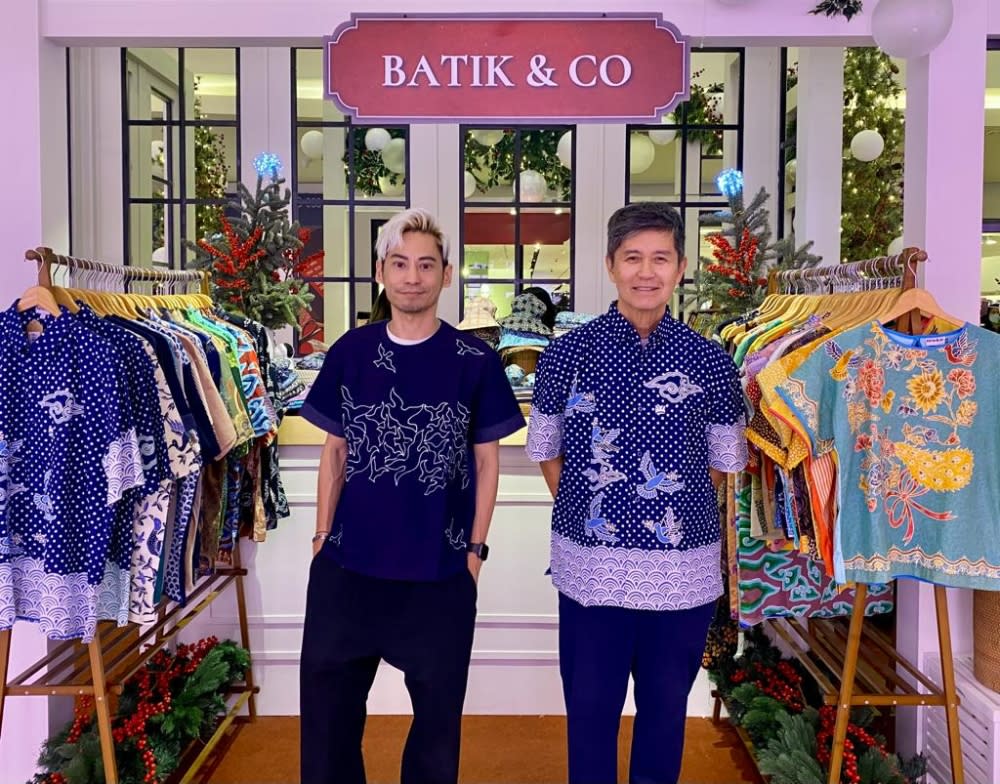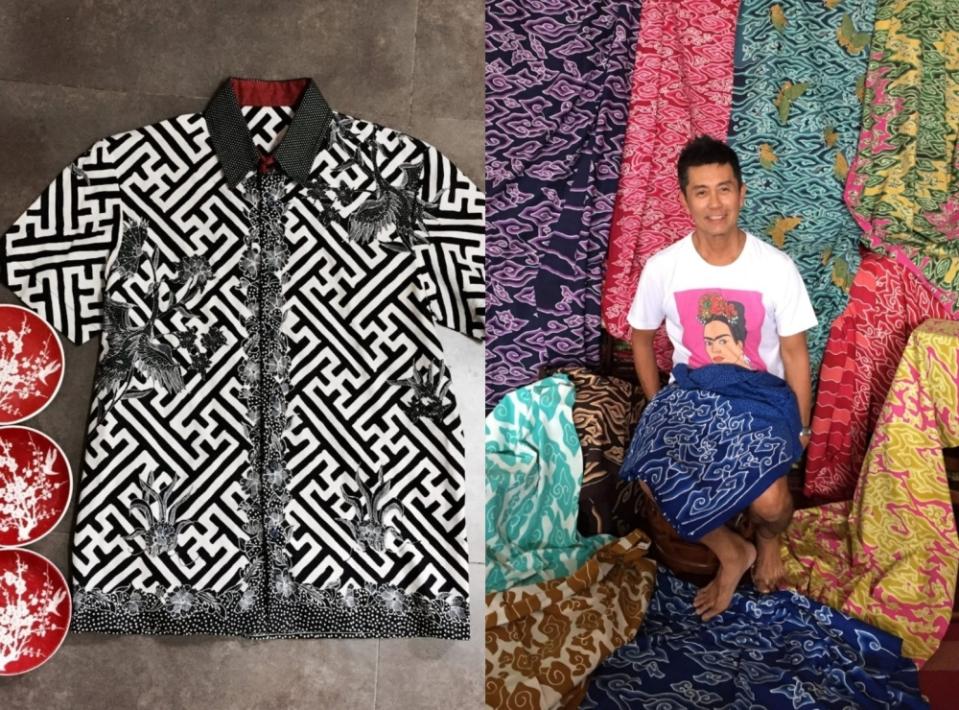Bridging the batik divide: Fashion veteran Tino Soon’s ‘integrative’ batik draws first-time buyers (VIDEO)

KUALA LUMPUR, Dec 12 — For someone who grew up with three neighbouring families of batik makers in Kuala Terengganu, fashion designer and entrepreneur Tino Soon sure took his time developing an interest in the traditional craft of batik-making.
After 45 years in fashion merchandising and design, first at department store Mun Loong, then as co-founder of defunct fashion boutique Salabianca, it took a spontaneous trip to Java in 2015 to ignite a passion for batik that he previously thought was never in him.
“I was fascinated by what I saw and wanted to start something with batik but Allan wasn’t convinced initially,” said Soon of his late business partner of over 30 years, Allan Chan, who started Salabianca with him in 1999.
But a forced visit by Soon to a batik maker’s workshop in Lasem, a small village in Central Java, succeeded in changing Chan’s mind to the endless possibilities that batik as an artform could offer in fashion.
In 2016, the dynamic duo, together with co-partner William Tee, started Batik & Co with popups and selling their batik, including batik face masks, to ‘many, many kind people who were nice enough to buy’.
Three years later, after battling colon cancer, Chan passed away at the age of 59.
After slowly picking up the pieces in the midst of the pandemic, Soon and Tee showcased their batik wear at a popup at Publika to great success in 2022.
Customers, many of whom were first-time batik buyers, said they had never seen anything like it.
“I don’t have a special liking for Javanese batik but I find it appealing because it’s integrated in its influences,” said Soon. “It’s about integration rather than segregation.”
Instead of just traditional prints, his hand-drawn designs come in an innovative fusion of multi-cultural influences, including from the royal Javanese courts, seen in unique motif placements on well-cut shirts of the finest workmanship.
On one shirt is the Javanese cloud motif of mega mendung, which is also known as the Chinese lucky cloud, depicted with air balloons and vintage airplanes against a backdrop of green and white polka dots.
Another is adorned with koi fish and buketan, a hybrid floral motif from the days of Dutch-occupied Java.
But the best part is its variety of animal motifs, including the cat, dog, horse, deer, monkey, birds, sea turtles and even dragons and mermaids in complementary colour combos on fine cotton.
“The koi fish design has been a hit from the beginning, it always sells,” said Soon, who sold out his Hari Raya collection at Mid Valley Megamall in April with Tee, sister Yen Nga and Tee’s sister, Iris.
Together, they had another successful run at Central Market with their Merdeka collection drawing customers of all ages and races, including many foreigners.
The select styles offered by Batik & Co come in shirts and T-shirts for men while ladies get to choose from boxy sleeveless tops, sleeveless dresses and cheongsam dresses.
“If a customer tries it on, nine times out of 10 they will buy,” said Soon, adding that he works with a team of ‘incredible’ batik craftsmen from Java who each bring a different skill set to the table.
The Javanese craftsmen who come from villages across Java, take pride in mastering one part of the batik production process. Soon also sources his batik from one batik maker in Terengganu.
Today, at 70 and with his batik label growing in popularity, he’s proven that he’s still got what it takes to make it in the fashion industry.
But he’s quick to point out he planned none of it and denied even having the vision in the first place.
“I’m not telling you a story of how clever I am because everything was provided,” he said. “I believe this whole project, somebody gave it to me, it’s a project from heaven.
He added at his age, he has the luxury of not caring what people think about him anymore and is happy as long as he’s healthy enough to do what he’s passionate about.
For now, he’s content to do only popups as going online would mean more work.
Plus, with a shop, online or physical, the selling price would be higher because of operating costs. The current average price of Batik & Co is RM149.

Batik & Co is about depicting multi-cultural influences in a new hybrid way. — Pictures courtesy of Tino Soon
Tee, who does the sales, enquiries and setup side of the business, said being a popup also gives them a chance to educate customers on batik.
“Most people don’t know the difference between machine-print, hand-drawn and hand-stamped batik,” said the 42-year-old.
Unlike fast fashion you get online, batik is more expensive because it’s labour intensive and uses natural material. But in the long run, it’s worth it because batik lasts forever.
“The pieces you inherited from your grandmother, it’s still beautiful, isn’t it?” said Tee. "The colours are still vibrant and you can still wear it today, that’s the timeless appeal of batik.”
Currently, Batik & Co has a kiosk in Mid Valley Megamall until December 25.
Soon added that you cannot go wrong with hand-drawn batik.
“The beauty of a hand-drawn is that everything you see on it cannot be repeated, and even if you repeat the same flower, it’s not exactly the same.
“If you want perfection, don’t buy hand-drawn, buy machine-made.”
“Batik is a craft, not the print,” he said, adding that he’s working on new motifs like the world map, children holding hands and a kampung scene.
“We want to showcase different kinds of batik in terms of inspiration, culture and technique.
“The idea is to encourage people to integrate, be open-minded, strive to do something new and look at things differently.”



